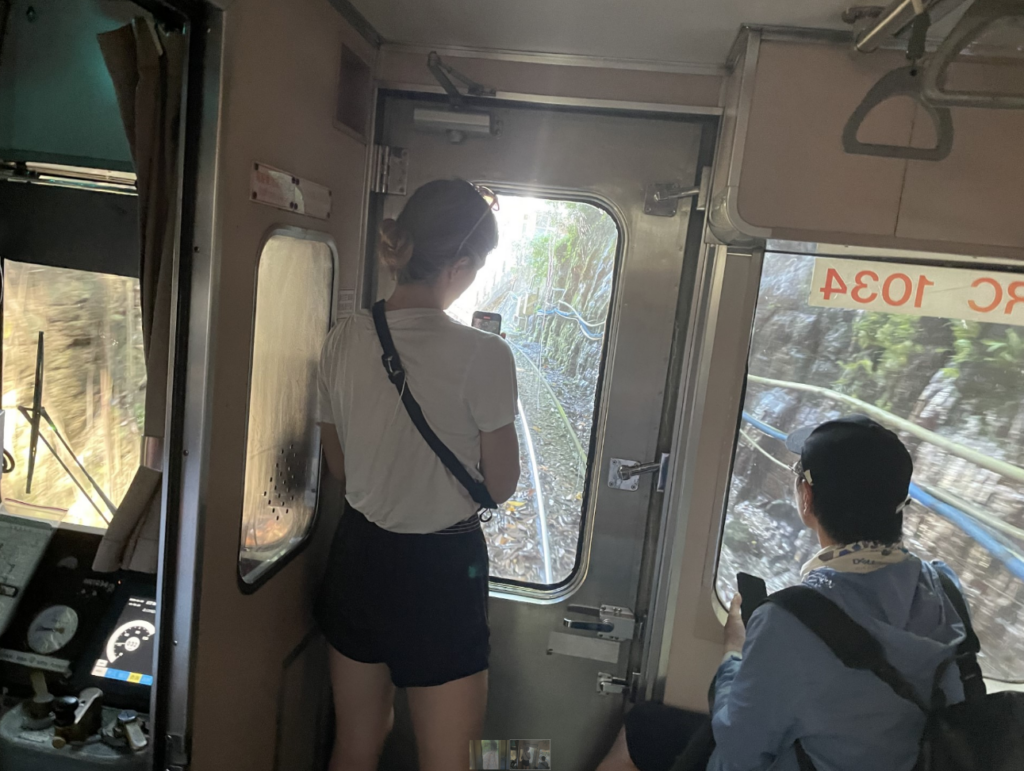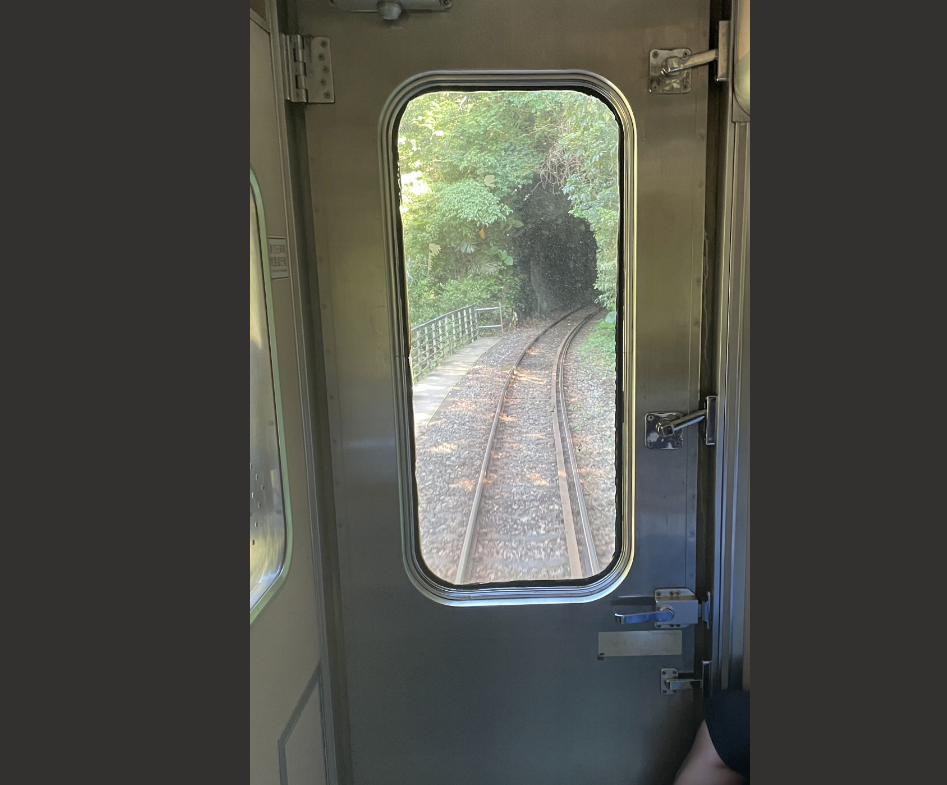I visited China in October, and have a few comments for anyone planning a similar trip.
We flew China Airlines via Taipei, because the stupid US government restricts direct flights to China. My bags didn’t get beyond Taipei for 36 hours, so initially I just had the clothes on my back.
Each time I visit Beijing, the pollution seems less bad, although it’s hard to judge as it varies depending on the time of year. In general, the city looks more prosperous than in 2019 (my previous visit), but the pace of change has slowed from the early 2000s. The interiors of commercial buildings have improved much faster than the exteriors and sidewalk areas. The Chinese seem to put much more effort into the look of private spaces (say compared to Japan, where the outside areas are very well maintained.) Here’s a complex designed by the late Iraqi architect Hadid:
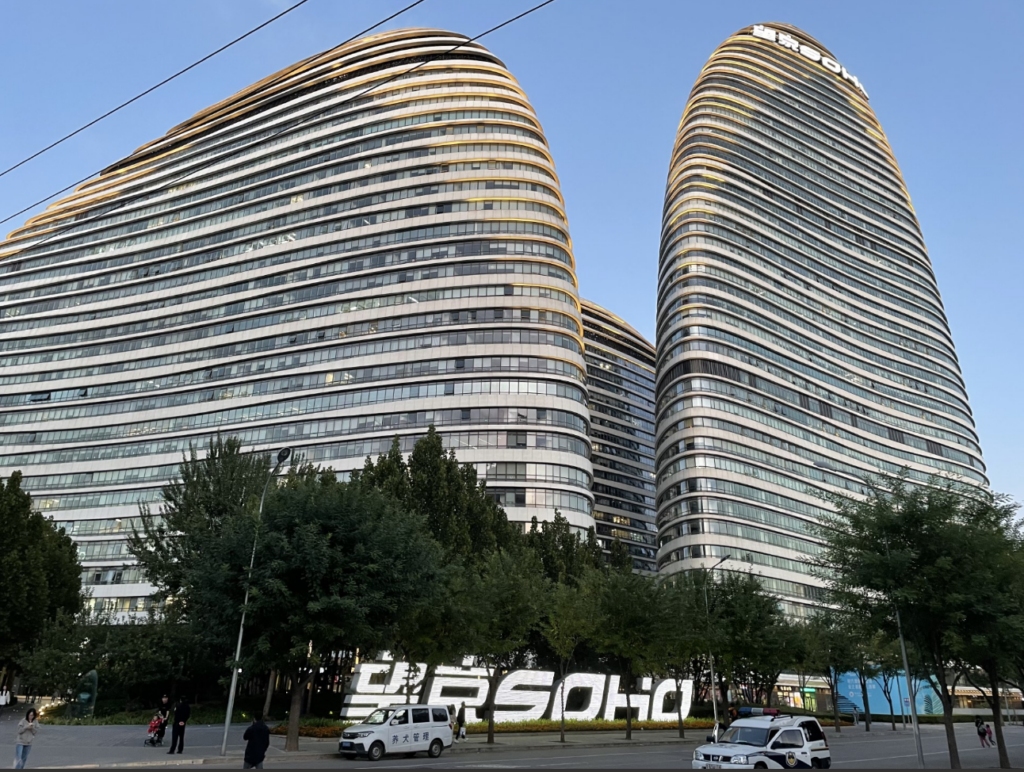
One of the biggest changes was the electrification of transport. Beijing was suddenly full of electric bikes and electric motor scooters. The city is far quieter than in 2019. Almost every Didi we took was electric (Didi is China’s Uber.)
I gave a number of talks while in Beijing, including two talks at the Central University of Finance and Economics, and also one at Tsinghua (often called the MIT of China.) I also gave a talk at the central bank, and was interviewed by Caixin, a business oriented media outlet.) I was also on a panel discussion at an IMF meeting. My message was to encourage China to steer away from fiscal stimulus, and instead rely on monetary policy.
In general, the Chinese students seemed far more eager to learn than students I’ve met in other places (including the US.) China was somewhat isolated during the Covid period, and there seems to be a real hunger to reconnect with the rest of the world. Compared to 2019, I saw far fewer westerners in Beijing, which is unfortunate.
We then left Beijing and traveled around China for ten days. Here are a few observations:
In most of the hotels, room service is done by robots. They look rather cute, although at first it’s a bit unnerving to stand next to a robot waiting to get into the elevator. But they are quite polite, allowing you to enter first. (Maybe they are Japanese robots.) Sorry, this video doesn’t show it move, as it was going to a different floor:
We took a high-speed train from Beijing to Xi’an, where we spent 4 days. In general, the high-speed network is a marvel of efficiency. The train stations have roughly 30 tracks, and they move vast numbers of people through the station each hour. Xian is a relatively pleasant university town with about 12 million people.
BTW, travel in China can be difficult if you are not part of a tour group, as things like admission to parks and museums can easily be sold out it you don’t purchase in advance. I benefited from having a wife that could but this stuff online—but it was even difficult for her, as blocks of tickets often sold out less than a minute after going on sale.
Among westerners, Xian is most famous for its army of terra cotta warriors. During the Tang Dynasty (i.e. the European Dark Ages), Xian (then called Chang’an) was the capital of China and the world’s largest city. The terra cotta army was only my third or fourth favorite sight in Xian. It is very impressive, but the crowds were so dense that it wasn’t as enjoyable as some other equally impressive sights. (If you wish to avoid the crush, there’s a nearby park with a Tang-era mausoleum that also has some warriors, and much smaller crowds.)
Even more enjoyable was the 14 km wall that surrounds the central city. At sunset you see lots of tourists (almost all Chinese), many of which are dressed in the traditional Tang Dynasty style (mostly women.) They rent the costumes and wigs in order to have their picture taken. The ancient city wall isn’t just extremely long, it’s huge—12 meters high and 12 meters wide.
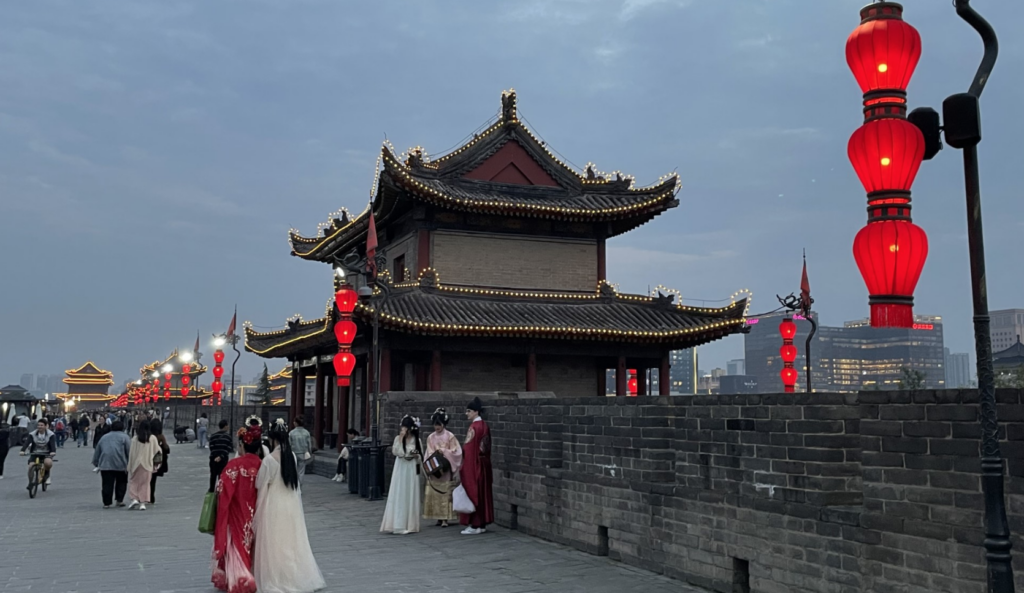
My favorite sight was the area around Wild Goose Pagoda and especially the Tang Paradise park. If I tried to describe Tang Paradise it would sound like a schlocky Vegas attraction, but it’s actually a pretty stunning Tang dreamland.
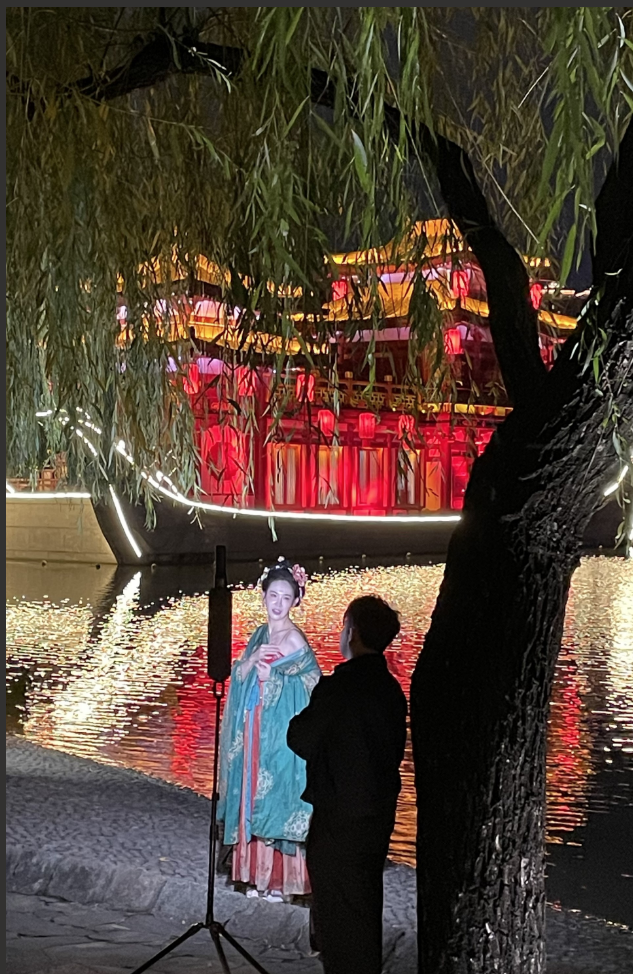
(Imagine if instead of building the Venetian casino, Vegas had built an actual exact replica of the city of Venice. It would lack the historical “authenticity”, but it would still be a pretty amazing sight.)
Go to the park about an hour before sunset and stay until after dark. The views are dazzling. Then go back to the Wild Goose area if you like spectacular fountain light shows (I don’t.)
After visiting the terra cotta warriors, we stopped at Xi’an’s version of Beijing’s summer palace, which is well out into the suburbs. The grounds are pretty interesting, and in the evening there was a stunning outdoor stage show of a love story based on a Tang era poem. As China emerges from the austerity of the Mao era, the Chinese seem to gravitate toward extremely colorful and intricate light shows at night. In this park, they used lights to create the impression that an ancient hillside pagoda was floating in the sky.
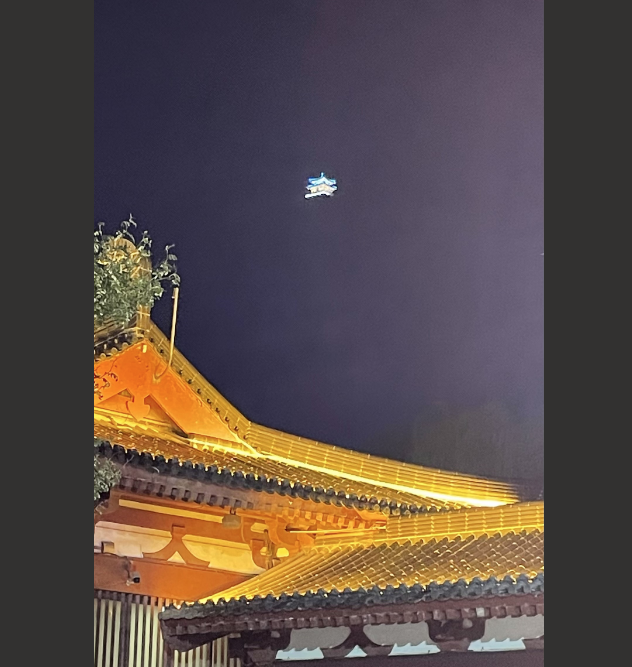
We then took another high-speed train to Chongqing, a city of roughly 17 million. Along the way we passed though densely populated Sichuan province, which has a bit more rugged terrain than I expected, despite being extremely rich agricultural land. Chongqing’s geography is similar to Pittsburgh–the meeting of two rivers at a point of land—but it’s much hillier. We stayed in a hotel right at the point, with a design based on the Marina Sands in Singapore. (Not quite as nice, but far less expensive). Of all the cities in China, Chongqing is the one that most reminds me of Hong Kong. There are lots of skyscrapers clinging tightly to steep hillsides. Once again, there’s a very colorful light show along the river at night.
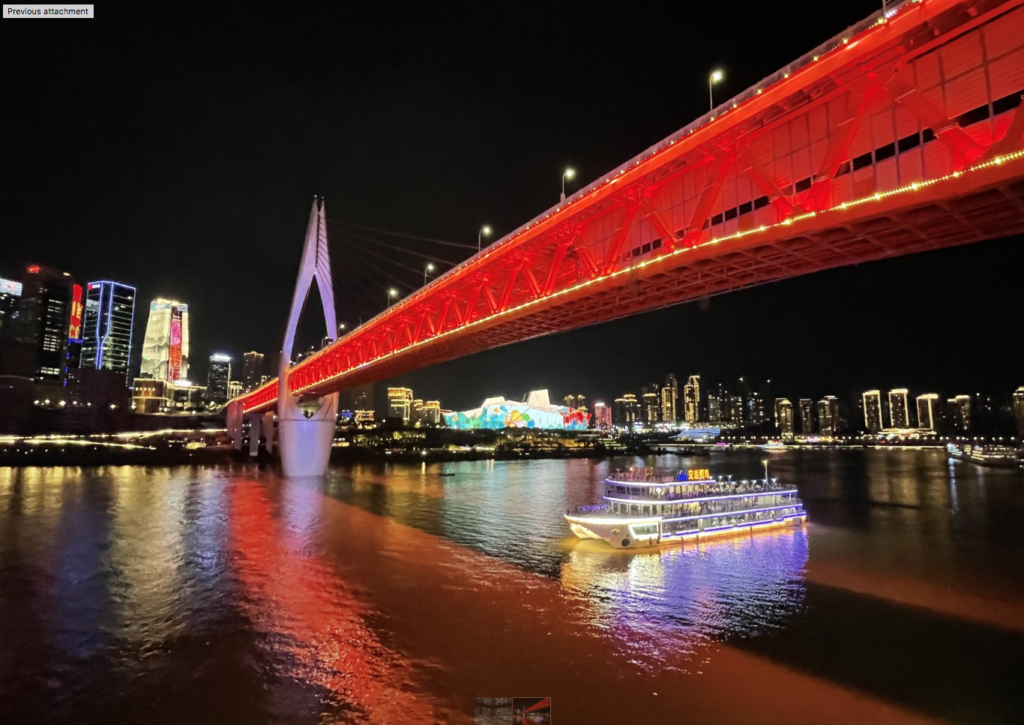
Some areas have almost a Blade Runner feel, like when the subway car goes out of the ground, into the air, and then shoots right through the middle of a high rise building (see video).
The streets in the central area are extremely crowded, more so than Beijing or Xian. My favorite parts included the walk along the river at night, and the old “mountain village”, also at night. Lots of things in China look better at night. But we did have an enjoyable afternoon at a bar high above the river, on a rare day of blue sky. You can get a wonderful meal at night at an outdoor restaurant overlooking the two rivers—at an extremely low price.
BTW, I saw a picture of a Borgesian book store in Chongqing, and decided to check it out. Don’t bother—it’s hard to find and looks less impressive than the pictures:
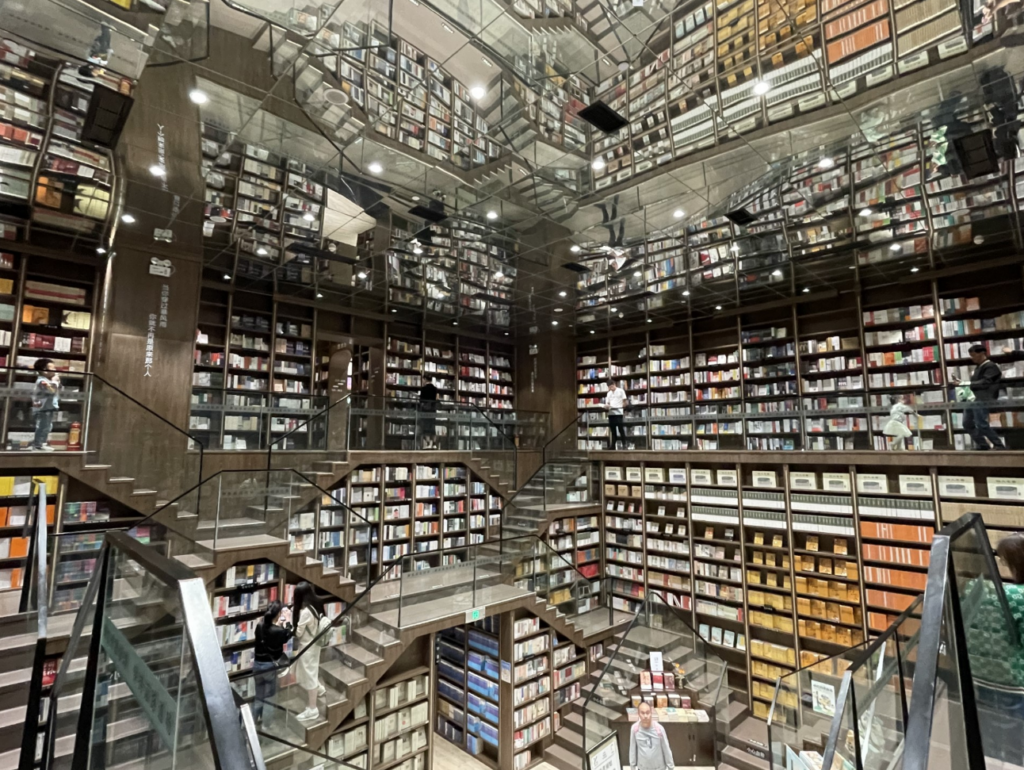
Then we took a low speed train to Zhangjiajie, in Hunan province. Even though it was daytime, we took a sleeper car, which is more comfortable.
In the West, Zhangjiajie is primarily known as the inspiration for the film Avatar. As is true of all the tourist sites we visited in China, it was extremely crowded. I’ve read that the economy is a bit weak in China, but with the reduction in international tourism, domestic tourism seems to be booming.
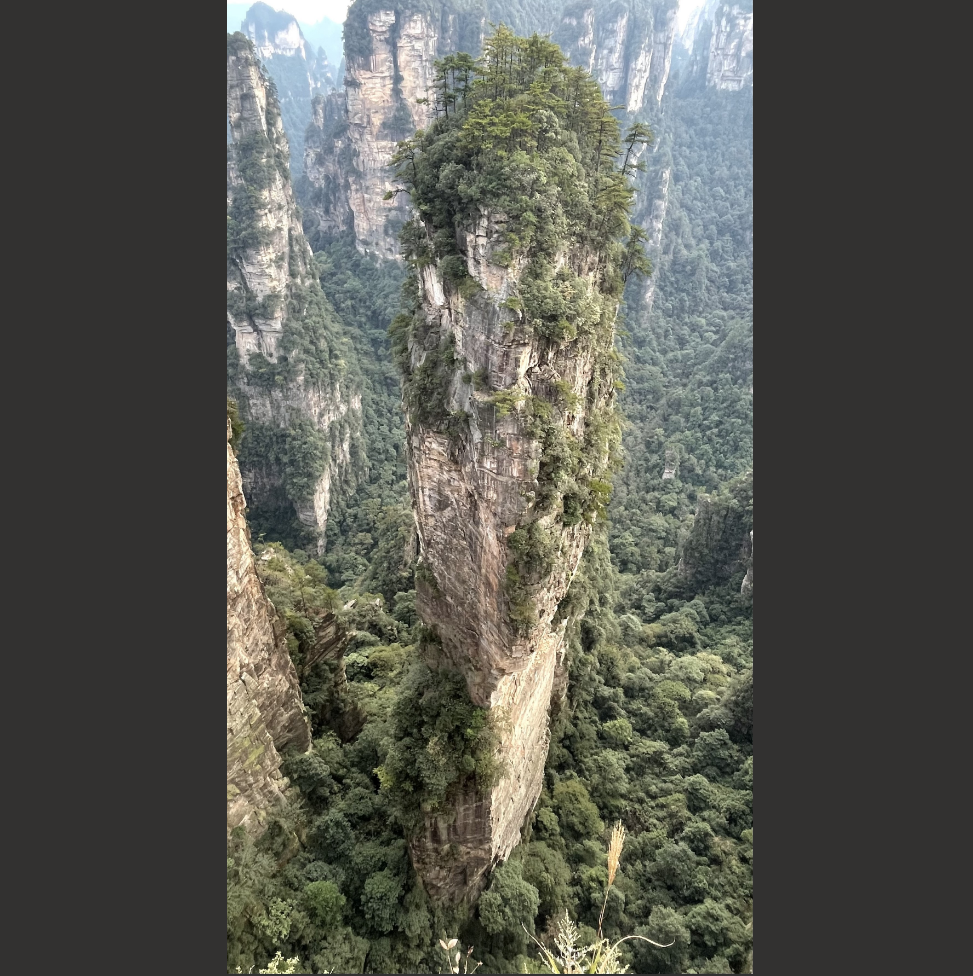
Compared to Western countries, the Chinese build much more impressive infrastructure in their parks. At one point we rode on roughly 15 escalators, one after another, carved inside tunnels in a steep mountain. Each was very long, the sort you might see in a London subway. They needed this because the extensive cable cars could not keep up with the volume of tourists. In the picture below, there are 999 steps leading up to the keyhole, which is larger than it looks. From there we took the 15 escalators to the top of the mountain, which is full of stuff like glass floored walkways hanging above vertical cliffs..
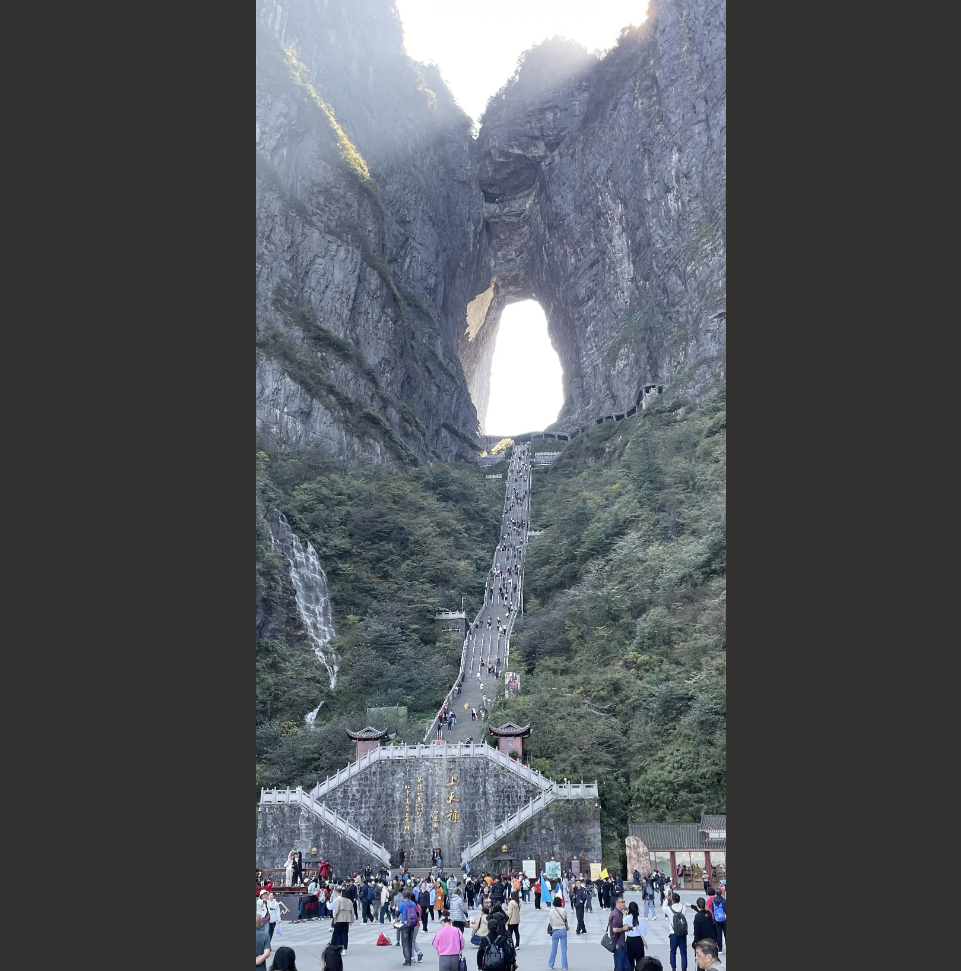
Back in Beijing, we saw a nice Matisse show at the 798 art district, one of my favorite parts of the city. Overall, however, the arts scene seems to have deteriorated in recent years, as the government seems to be emphasizing patriotic art over avant garde art. Four years ago, I saw one of my favorite contemporary art exhibitions at a museum across the street from 798. This time, the same museum showed a schlocky exhibition of recent Chinese landscape painting. In fairness, the crowds were 10 times higher for the bad art, so who am I to complain?
On previous visits to China, fashion seemed quite different from the West. Young women often wore frilly pastel colored outfits. On this trip the fashions seemed more similar to the West, with more women wearing dark colors like black.
When I go to China I always get a haircut. This time my usual place had closed down, but I found a cheaper place for $4.20. This Econlog post has more discussion of Chinese purchasing power. (TLDR—China is super inexpensive.)
On the way home, we stopped of for three days in Taiwan, which I described in a previous Econlog post. My favorite part of the trip was the old train we took in the northeastern part of the island. It reminded my of some very evocative scenes in films by Hou Hsiao-hsien, which show old trains creeping through green tunnels of vegetation. My wife confirmed that this was the train line used in those films. I suppose it won’t mean much to most people, but Hou Hsiao-hsien fans will know what I mean:
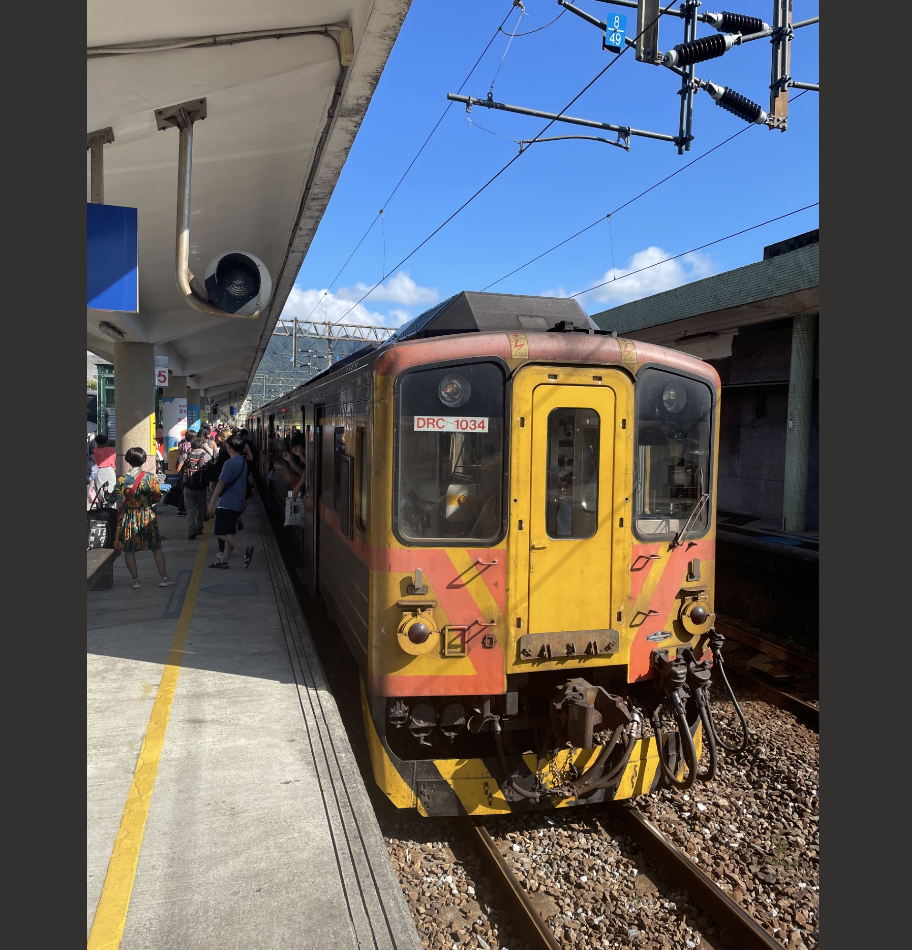
PS. I got a bad cold toward the end of the trip. People in Beijing told me it was probably the walking pneumonia that was going around. When I got home, I saw some slightly alarmist stories in the Western media about this outbreak. Here’s Bloomberg:
The rampant spread of mycoplasma has caused particular concern as many kids appear to not respond to azithromycin, which is commonly used to treat the infection. Among Chinese children, resistance to the antibiotic and others in the same class is more than 80%, the highest in the world, Yin Yudong, an infectious disease doctor at Chaoyang, told Beijing News earlier this month.
I’m not sure if this is what I had, but I can confirm that azithromycin didn’t work for me.
